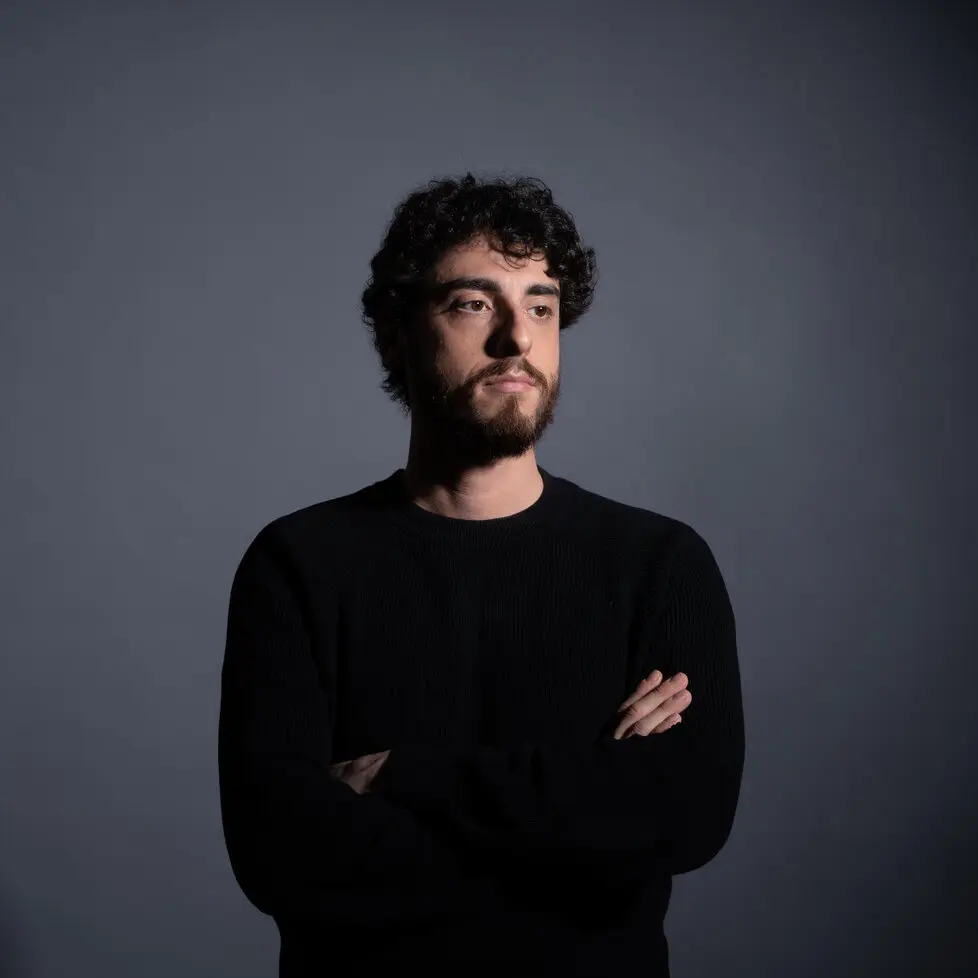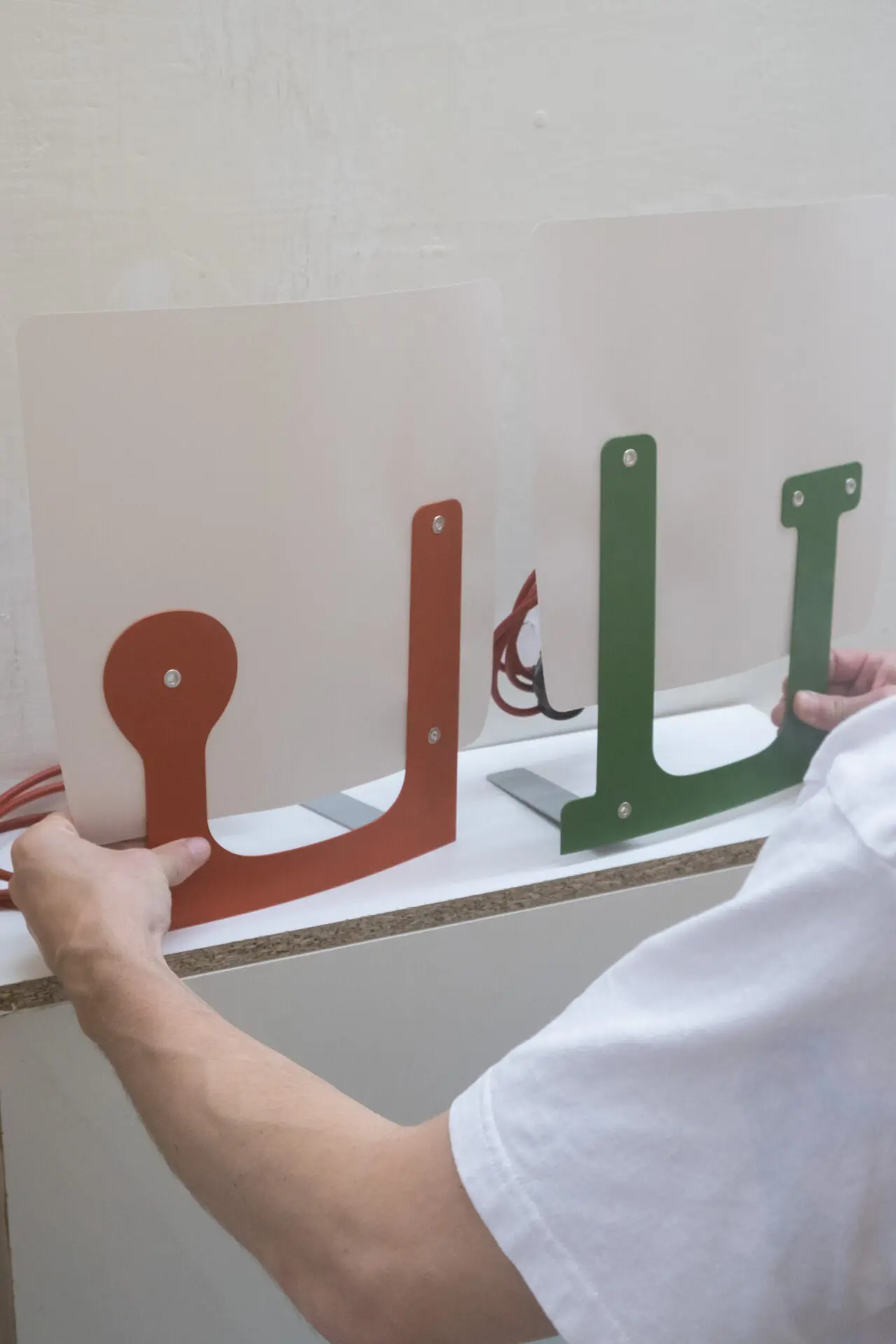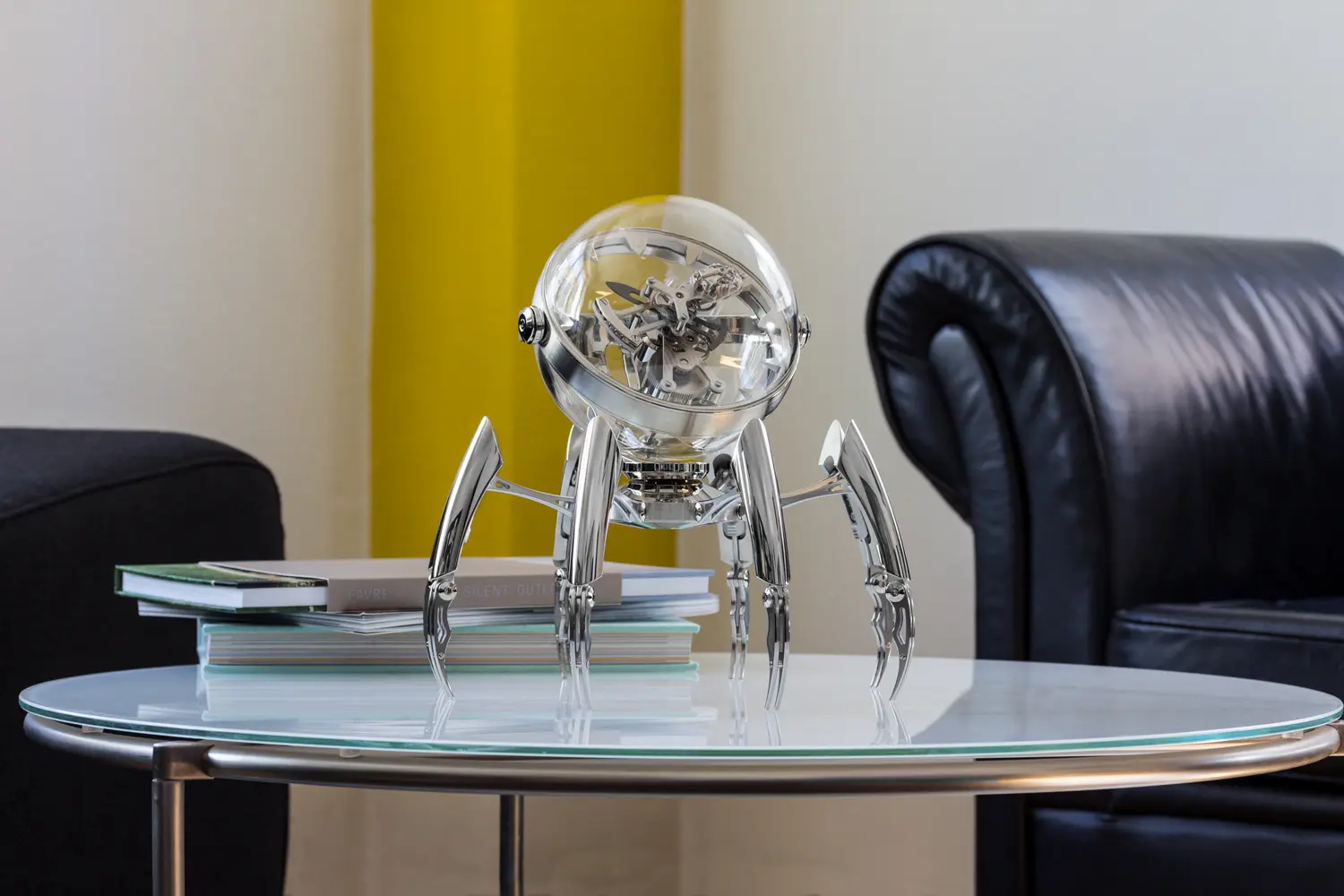Thelonious Goupil: modeling design through making
Mistakes and serendipity aren’t setbacks – they’re opportunities. They open new paths in the creative process, especially when the designer allows the unexpected to lead the way. Paris-based Thelonious Goupil embodies this philosophy. His work navigates between softness and structure, intuition and precision, bringing design to life by letting the process guide the outcome.

With a portfolio that includes collaborations with brands like Iittala, Vitra, and Lehni, Thelonious Goupil’s trajectory blends industrial design expertise with a deeply personal, hands-on approach. Whether it’s the poetic tension of The Color of Things or the construction logic of Aluminium Module, his identity remains intact. But what caught my eye was Paysages Industriels – a self-produced collection of lamps handmade in his studio. A surprising move for someone with such a strong presence in the product design world.
Curious about his mindset and creative compass, I reached out to understand how Thelonious Goupil designs by doing, letting the act of making shape the outcome.
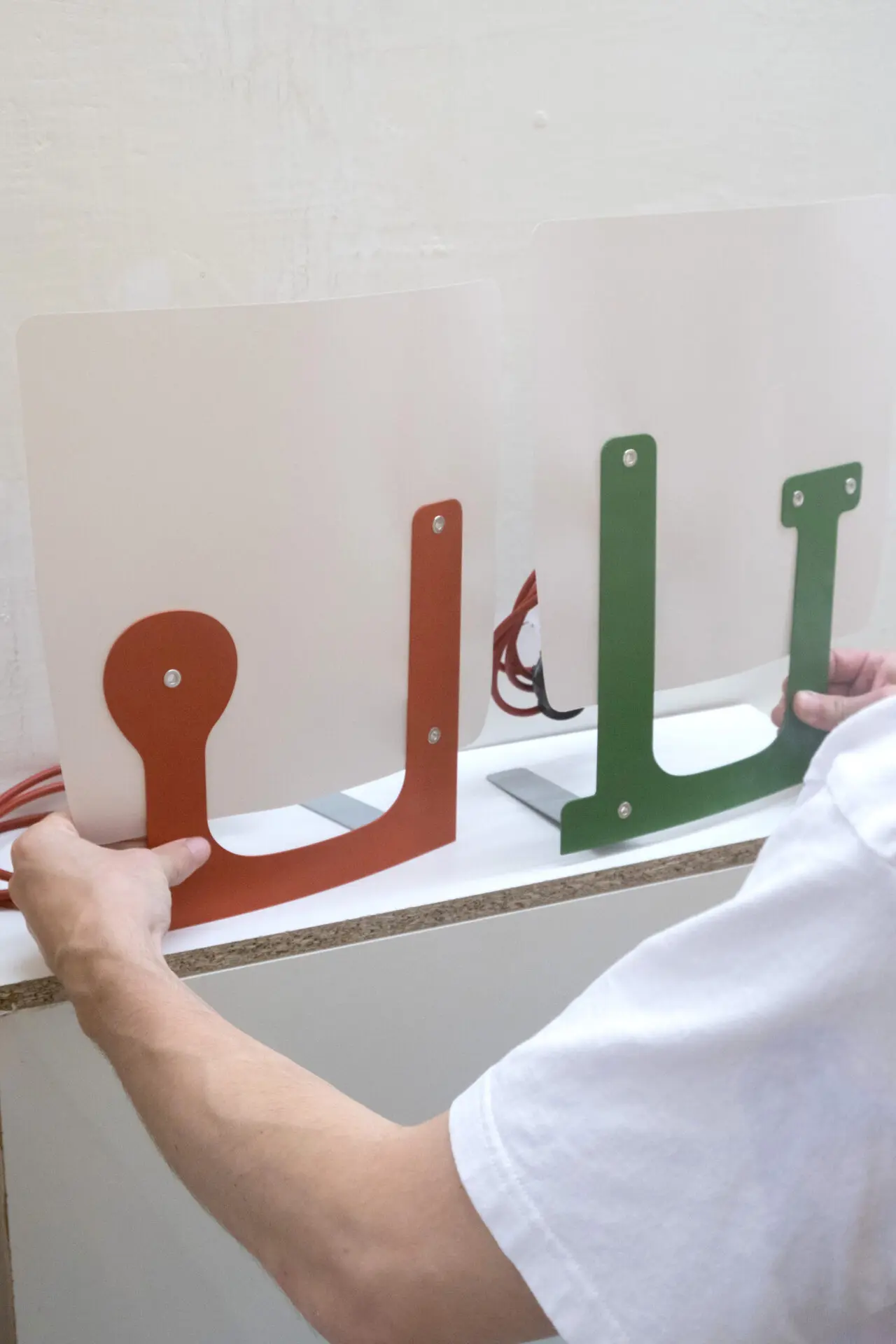
Let’s start with your story. How did your background and training shape the way you approach design today?
Thelonious Goupil:
“My father is an artist and my mother studied art history. Both spent most of their free time growing a beautiful garden in a village in Normandy where I grew up. Very close was the wood workshop of my grandfather where I used to spend a lot of time. Since I was a child I’ve been surrounded by people transforming natural materials and I think it inspired me a lot. Later I studied at Ensci-Les Ateliers in Paris. I interned at Ransmeier inc. and then at Jasper Morrison ltd. I learned so much there but I also felt the need to seek something different than just designing beautiful things with a lot of care. I’m trying to take one step ahead and question our habits, how I live, who I design for and how I can disturb established conventions or standards.”
Your work blends softness with structure. What do you search for when designing an object? Is it more about function, emotion, or identity?
Thelonious Goupil:
“Probably all of that. The initial point is generally the desire to make something that I would be happy to live with. I’m trying to bring myself satisfaction, happiness or joy if possible. Function is indeed essential and is a very useful guideline (together with the construction logic of the material I use). Concerning identity, I’m trying to make unexpected things feel natural.”

Photo : Louis Niermans / Art direction : Marine Armandin
Your projects move between collaborations with global brands and self-initiated, hands-on pieces. How do you balance these two ways of working? What do they give you that the other doesn’t?
Thelonious Goupil:
“Brands give me access to sophisticated industrial tools which is a way for me to explore a technical language. However those are very slow and constraining projects. That’s how I came to self producing pieces. It is a way to feel freer, be able to experiment and define a more personal aesthetic. The perfect balance for me is to have one of each running along at the same time with a spice of other activities.”
Let’s talk about modeling and prototyping. How important is making with your hands in your design process? Do the materials ever tell you what to do?
Thelonious Goupil:
“It is a very apropos question as I’m trying to stay as far as possible from my computer during the creative process. I always start a project by playing with material and making models, sometimes without knowing at all what I look for. There’s something a bit magical happening there. If you trust your hands enough they might find something unexpected that is worth making a project about.”

When do you feel it’s time to stop prototyping and let go of the piece? Is there a moment when it feels “done” or is it always a negotiation?
Thelonious Goupil:
“Yes sometimes it feels done and it’s the most satisfying thing. Sometimes it’s a negotiation because time is running. In those cases I can feel disappointed but I realize I often like what I did later on. For that reason, if I did my best, I try to teach myself to be satisfied anyhow.”
Your lamp series “Paysages Industriels” feels incredibly personal. What’s the story behind this collection? How did it evolve from an idea to a proper collection?
Thelonious Goupil:
“The story is that when Michele Foti and Layhul Jang proposed to me to do an exhibition in their gallery Small Small Space in Milan I was working on some lights and I thought about making one for them. Their space is a large window shop and it offers a very frontal relationship to the viewer so I developed a lamp to be seen from the front. I wanted to self-produce them and still achieve a quality object so I developed a simple way of fixing a thick tracing paper ( to diffuse the light ) to a lasercut metal piece ( to hold the bulb and the paper in place ). This principle was very free and open and it became an occasion to make many different variations.”

What does it mean to launch a self-initiated project today? Is it a way to express freedom, test ideas, or reclaim authorship?
Thelonious Goupil:
“It’s all of that plus I see it as a way to make a living by selling things in direct. Design is so competitive, the industry doesn’t pay much so I’m exploring different strategies to keep making things but with a bit more cream in my spinach.”
Do you think self-production is becoming a new model for designers? What does it say about the current state of the industry?
Thelonious Goupil:
“Some of them, it’s clearly a new model and they manage to make a living out of it. What it says from the industry is that it’s very hardly a way to make money and thus, instead of being nostalgic of a time during which a few designers could live on royalties we should explore those new models that are more sustainable, allow for new ways of making and bring more diversity in a market that suffers from being so normalized. Saying that I’m also dreaming of the day when companies will sit at the table together with philosophers, environmentalists, designers to wonder « what do we do now? » looking a bit farther than the next fair in Milano.”

Where do you find inspiration? Are there references, materials, or places that regularly fuel your creativity?
Thelonious Goupil:
“I find my inspiration in books, discussions and travels. I just came back from the Amazonian forest where I spent two weeks and I was so astonished by the reality and the people there. Now I’m answering this interview from the library of le Louvre in Paris that specializes in fashion and design and contains unlimited inspirations.”
How do you stay open to chance and error during the process? Does unpredictability feel risky or necessary for you?
Thelonious Goupil:
“Yes, if I look further than design, I feel life itself is about accepting and if possible playing with things that are unpredictable. It’s also about being open to new things entering your life without getting bored ! Sometimes it’s very uncomfortable but it is worth what you learn. So I feel it’s the same in design, you don’t always control what’s happening and if you take it as a chance, you might get happily surprised.”
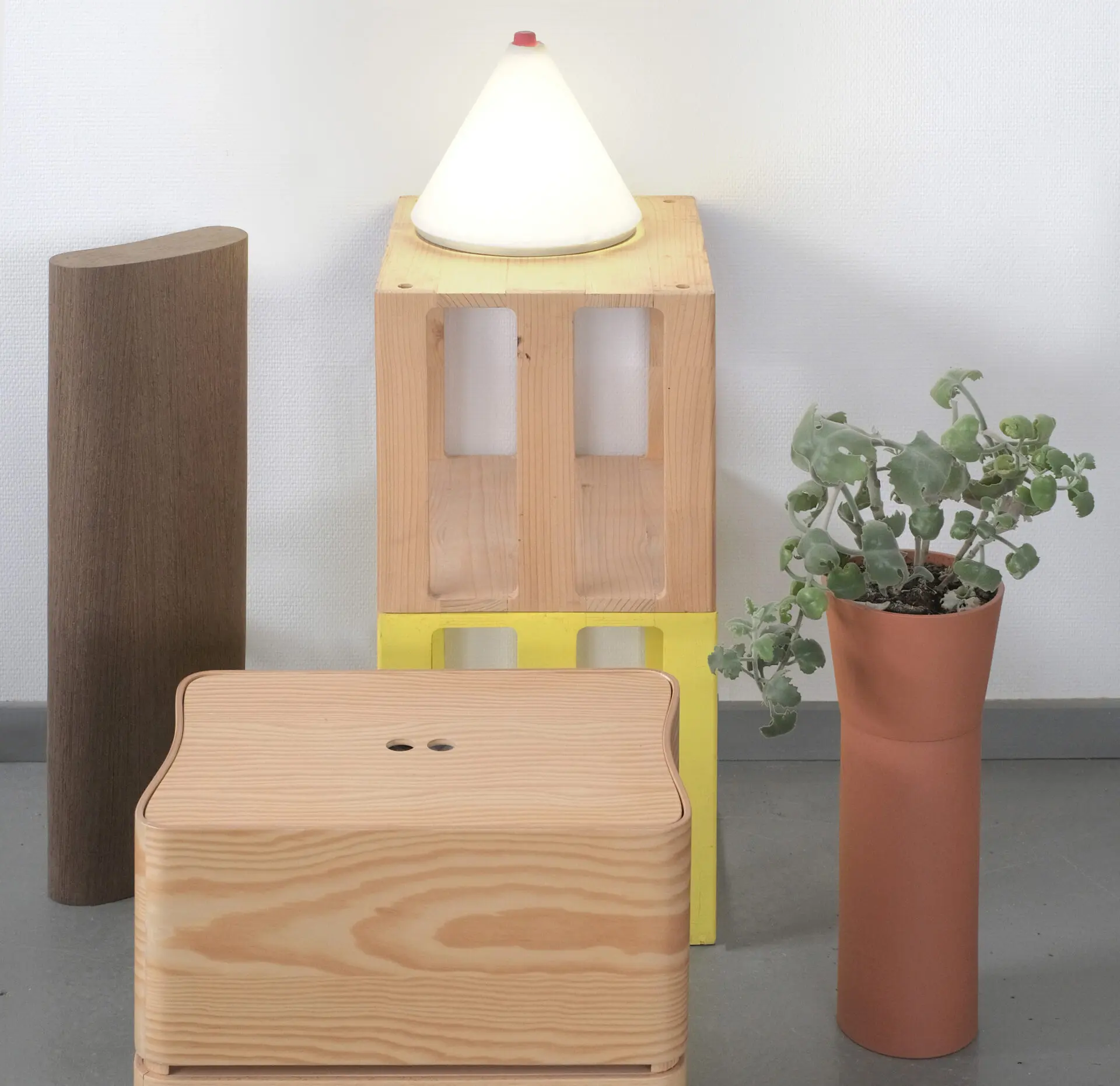
Thelonious Goupil’s work is a reminder that design isn’t always about control, it’s often about listening. Listening to materials, to process, to chance. His ability to shift between hands-on experimentation and industrial collaboration speaks to a broader, evolving model of what it means to be a designer today: less about fixed outcomes, more about adaptable systems of thought.
In this sense, his approach offers a compelling expression of design theory in action, where ideas aren’t just conceptual but embedded in material, gesture, and risk. In a landscape that increasingly demands agility, authorship, and responsibility, Goupil’s practice reinforces the value of intuition and iteration, two ingredients that theory alone can’t teach, but that design can reveal when we dare to make without knowing exactly where we’ll end up.

